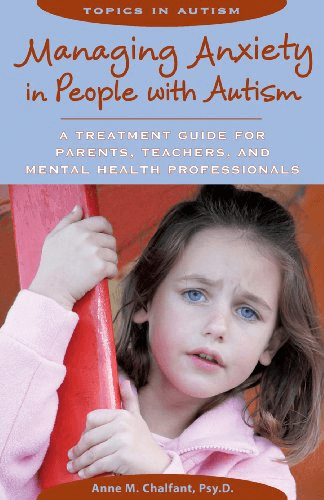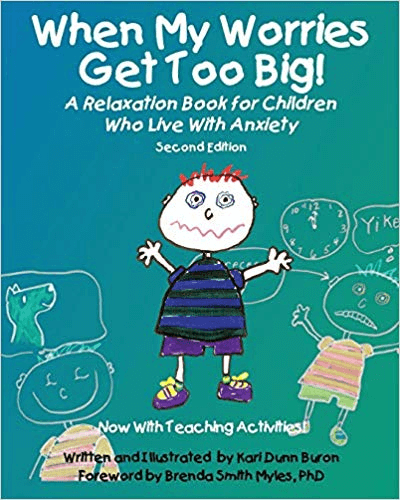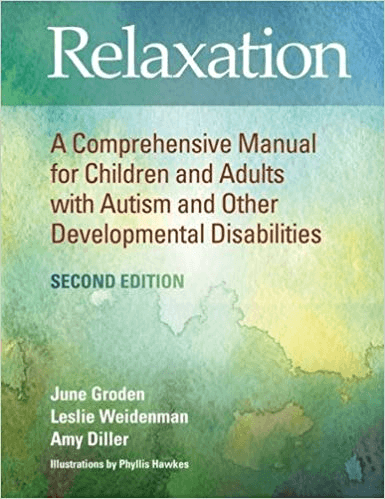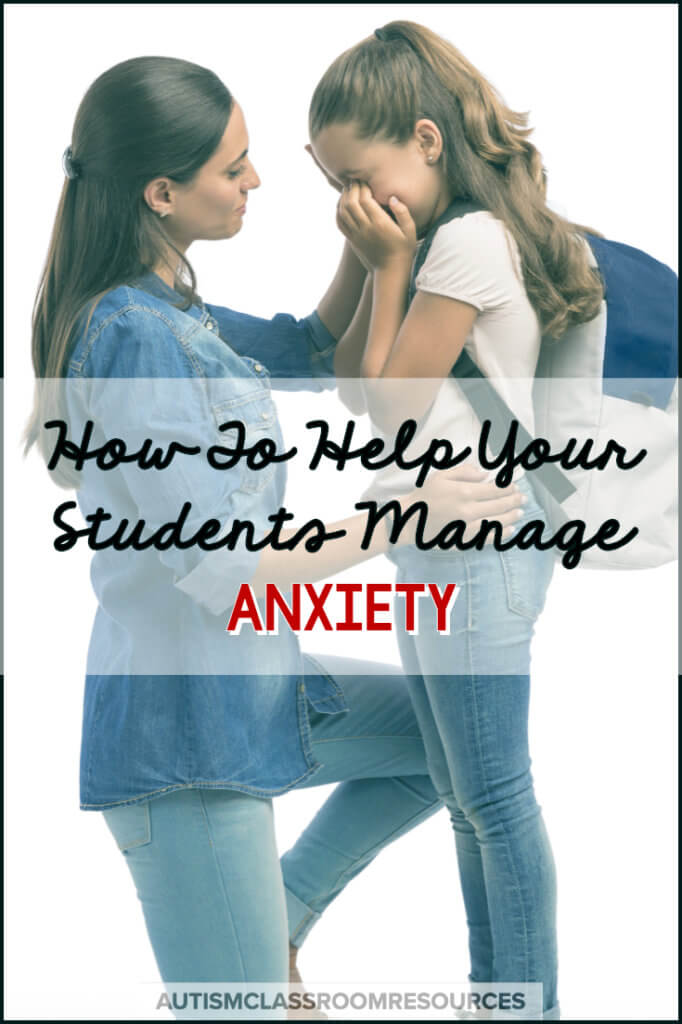
In my last post I talked about how anxiety can affect our students and how to help students identify when it is affecting them. It’s important to remember that anxiety is silent too. You may not see it creep up until the student melts down. And then it might seem out of the blue.
This is an update of a post originally from A Special Sparkle.
Impact of Anxiety and the Need for Balance

For instance, if Kayla stays in a stressful situation too long, it increases her anxiety. So let’s say we push her to stay in a situation that’s hard in the morning. In the afternoon, she makes a mistake on her paper (a silly little mistake). The previous anxiety makes that little mistake seem much bigger. It’s hard to remember this as we push students to extend their boundaries and do new things. Balance is always the most important thing to strive for.
So, having begun to teach students how to identify when they feel stress, the next step is to help them figure out what to do about it. Some of that is up to us and things we can put in place. Some are skills we need to teach them to cope with stress.
I would say coping with stress is a huge life skill for all students; some individuals just need more help with it than others.
7 Strategies You Can Use or Teach to Reduce Anxiety
**This post includes affiliate links for some items. The prices are the same for you but result in a small payment to me. I only recommend items that I would use myself. More information is available in my privacy statement.**
1. Schedule Adjustments
Adjusting the schedule can sometimes help. So if a student is having a high anxiety day, consider easing up on the schedule to make it slightly easier.
This could also mean adjustments to the schedule so that he or she leaves the activity before becoming overwhelmed. You want to be careful that you don’t keep a student in an activity until he becomes anxious because the anxiety and/or the meltdown will be reinforced when he has to be removed.
So, figure out about how long he/she can manage in the activity successfully and have him scheduled to stay for slightly less than that amount of time. Adapting the schedule might also mean starting his or her day off with a preferred activity or a calming activity to help start the day off calmly.
This post contains affiliate links for purchases. I only recommend resources I use myself. The price is the same to you, but it gives me a small commission to keep finding them for you.
2. Adapt the Work
A student may be able to participate in an activity for the full length of time if the work is adapted. Clearly this is a balancing act of making sure that there is academic rigor balanced with the relief of anxiety. However, this is a great proactive strategy to use while you are teaching him or her to manage the anxiety and reduce it in other ways.
Keep in mind that telling a student who is overwhelmed by the work that he only has to do part of it, may not lessen his anxiety if he still sees the whole thing. It may be helpful to break down the task and only show part of it to the student to prevent him from becoming overwhelmed. This post from my blog might give you some ideas for that.
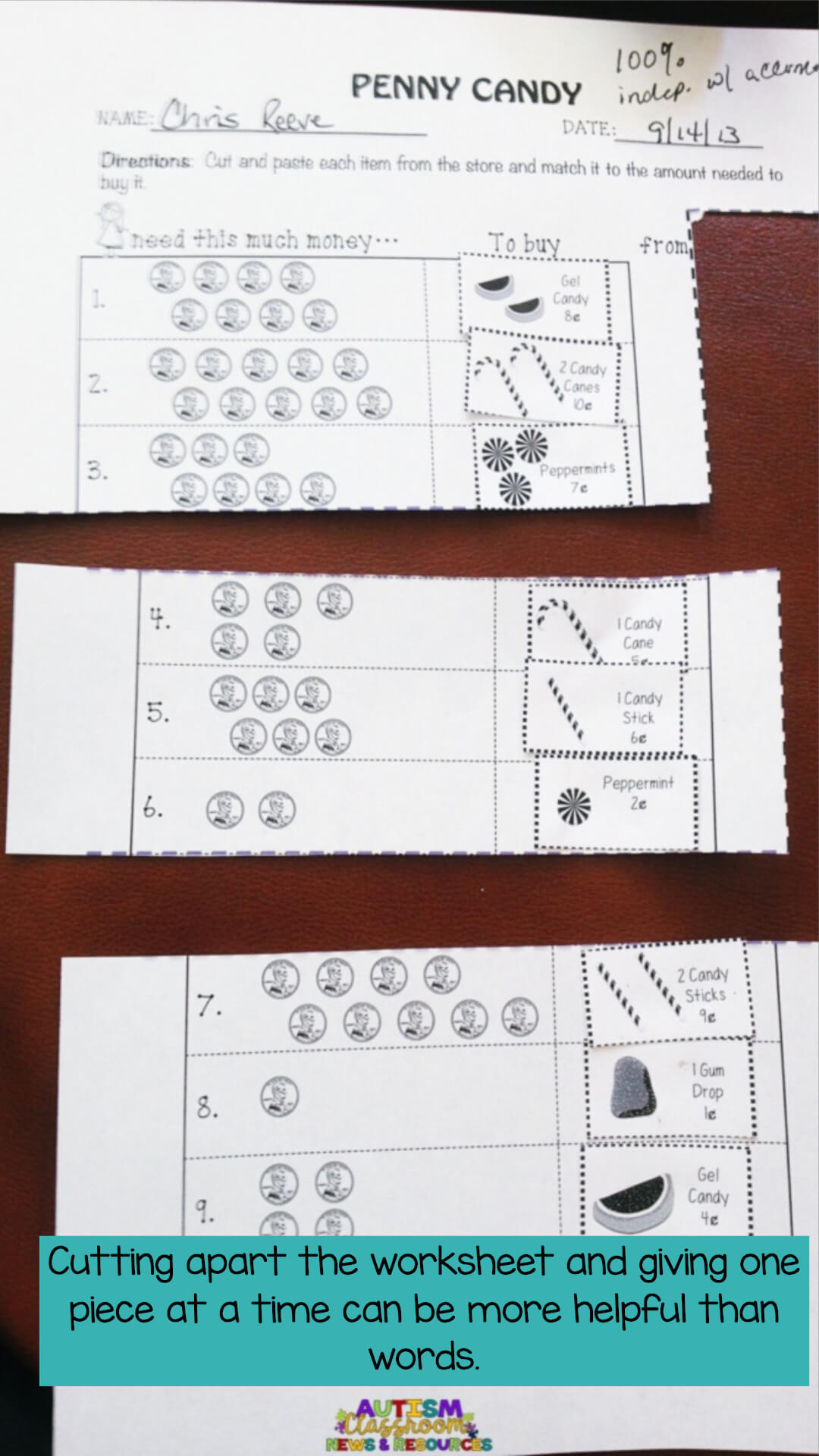
3. Acknowledge Anxious Feelings
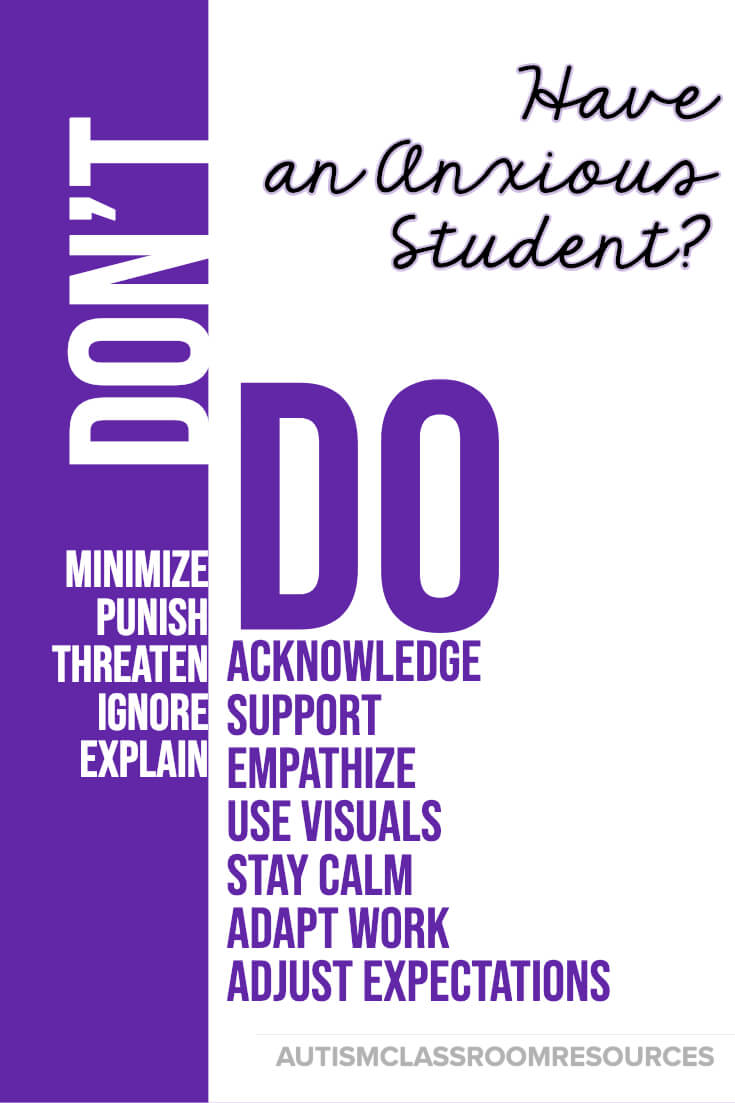
Don’t discount the feelings of anxiety. They are very real. Think about the times in your life when you have gotten really scared or worried about something–a big job interview, your wedding, meeting your future in laws for the first time, or your first date with a new person. Did people telling you not to be worried really ease your anxiety? Most likely what helped reduce your anxiety was a friend or family member who sympathized and recognized your feelings while still staying positive about your ability to deal with them. We live in a society where it’s considered weak to show signs of anxiety so we tend to minimize it.
We also don’t always know how to respond to it, so we tend to play it down to avoid it. But anxiety is a real thing that people experience. Some people experience it more than others and for some it becomes disabling. Minimizing it doesn’t reduce that problem. So, acknowledge that the child is feeling anxious (e.g., “I know you are feeling overwhelmed right now. What can I do to help you stay calm?”).
This is a great book by Anne Chalfant in which she provides a lot of great information about ways to handle anxiety in individuals with autism, but it is relevant to everyone.
One of the things that she stresses that I really love is emphasizing bravery. Talk about how a child is being brave when he or she is trying something new or doing something that increases anxiety.
Focus on the positive and choose your words in such a way that you are emphasizing confidence and presuming competence for the person. Talk about bravery and what it means.
This is a terrific book that has been a great resource for how to adapt the environment and also how to teach skills like progressive relaxation and other stress management skills.
4. Social Narratives (stories) or Workbooks
One tool that I’ve used very successfully in the past is a workbook designed for children called When My Worries Get Too Big!: A Relaxation Book for Children by Kari Dunn Buron. This is an awesome book that takes students through a variety of ways that they can identify when their anxiety is getting too high and then helps them identify ways that they can reduce it.
The book works kind of like a Social Story in that it takes the child through a variety of ways to both identify stressful feelings and determining coping strategies. It can be used with The Incredible 5-Point Scale I talked about in the last post.
Click picture to see in store
Social Narratives are another possibility to help students learn strategies to manage their anxiety. Focusing specifically on strategies to use, others’ perspective of their behavior, and pairing them with visual supports can help to make the simple stories more effective.
5. Teach Deep Breathing
Go ahead–take a deep breath. Now take another one. And one more. There, doesn’t that feel better?
One of the most common methods for relaxing is to regulate our breathing, and we often stop and do this by taking deep breaths. This is a great skill for students to learn, but it is hard for some of them given the sensory issues and the difficulty with motor planning. Ask some students to take deep breaths and they hyperventilate. Here are some strategies to help them learn to be effective with deep breathing.
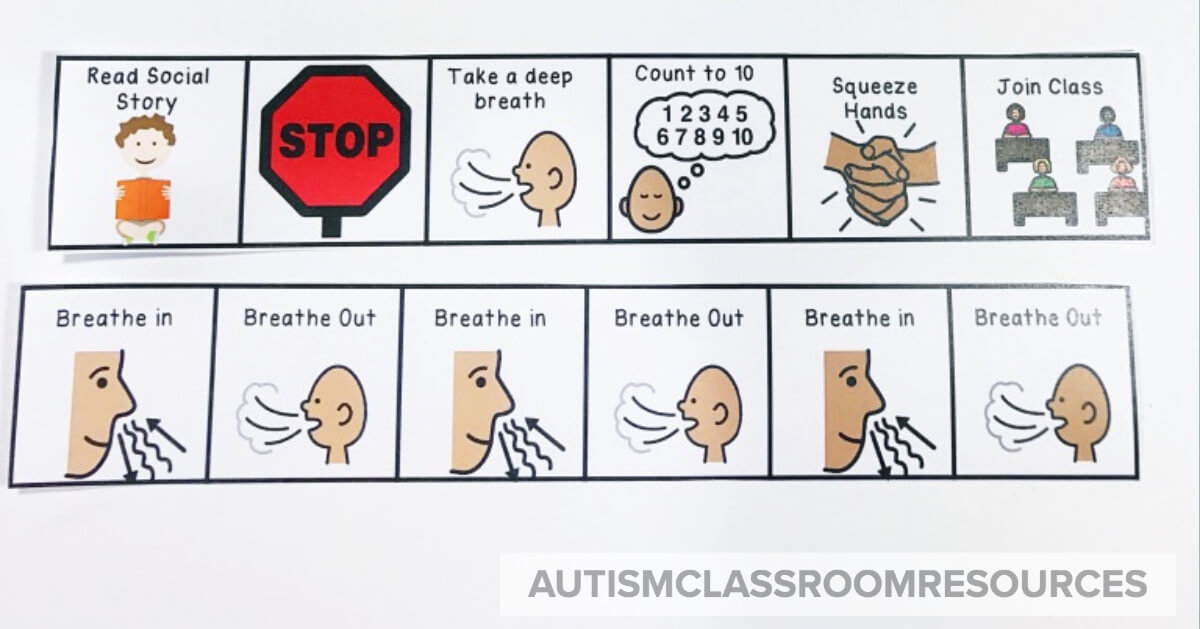
- Use visuals. This visual is just a way to help children slow their breathing down and is really effective at getting them to understand better what deep breathing looks and feels like.
- Have them stand and raise their hands when breathing in and lower hands when breathing out, much like you might do in exercise class.
- Have them put their hand on their abdomen to feel its movement when the breath goes in and out.
- Remember that first you have to teach the skill so the student becomes proficient at it when he or she is calm before it can be cued and used in stressful situations.
6. Teach Progressive Muscle Relaxation or other relaxation routines.
Like deep breathing, progressive relaxation strategies are something that have to be taught when the child is calm, and then it can be cued when needed. It is also something that can be programmed into the child’s schedule to help try to maintain calm.
There are lots of great resources out there these days to teach relaxation to kids from Yoga to mindfulness to progressive relaxation. Here are a few resources you might find interesting or useful.
This book is a great resource for teaching progressive muscle relaxation to students with ASD from the Groden Center. It uses visual supports and walks you through the teaching process.
This is a pin with a set of routines for teaching relaxation through imagery including the steam engine. The site it links to also has routines using a tea kettle, and Spiderman.
7. Provide visual choices or reminders
These visuals provide information and reminders to a student about what to do when he or she starts to get frustrated or stressed. I like to integrate them with instruction and social narratives to help the student learn to how to use them effectively.
Always just remember to teach them when the student is calm, not anxious. Then later you can cue them when they are needed.
These are just some of the many ways that you can help students who struggle with anxiety. You can find all the books I recommend for anxiety in my Amazon store here.
Need social stories seen in this post? Just click on the picture of the tool you are looking for.


